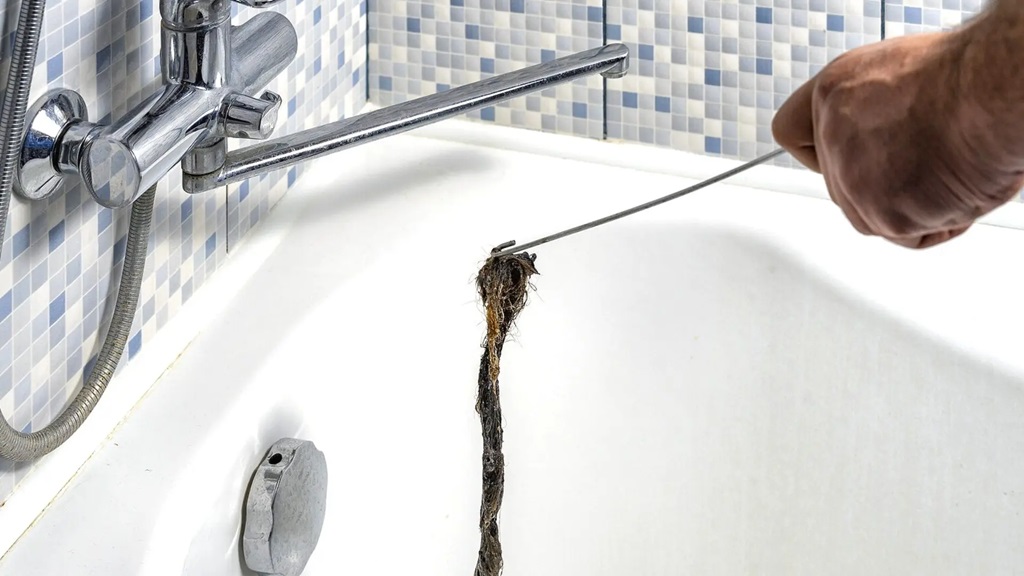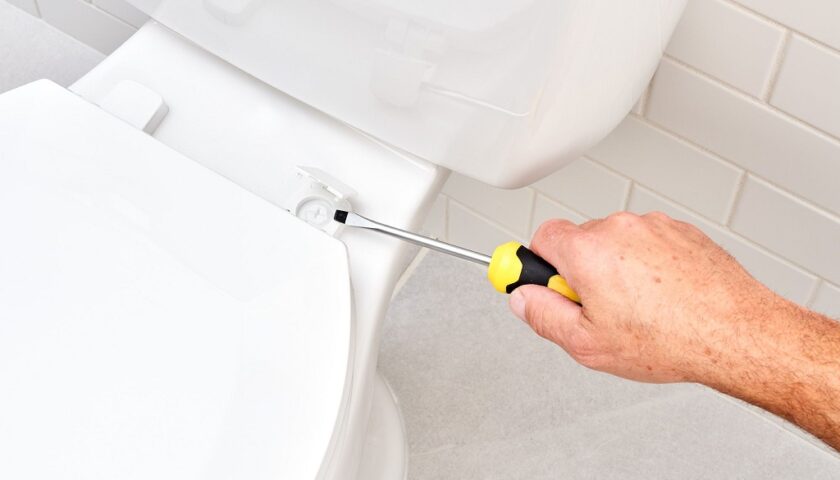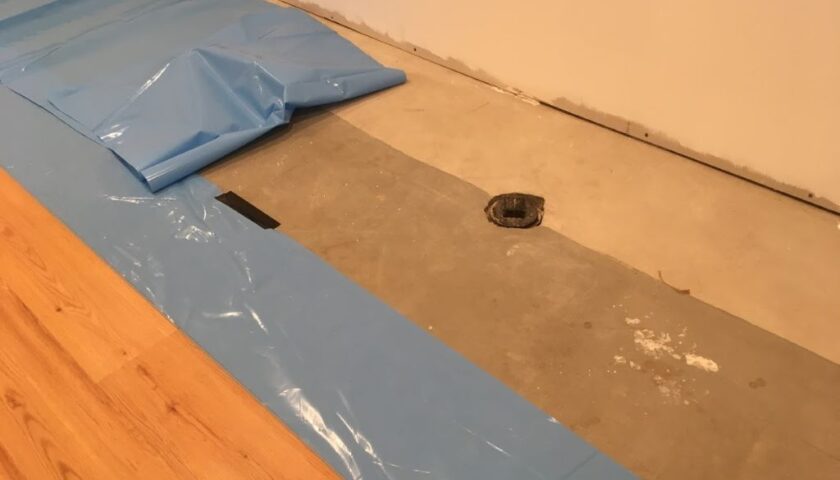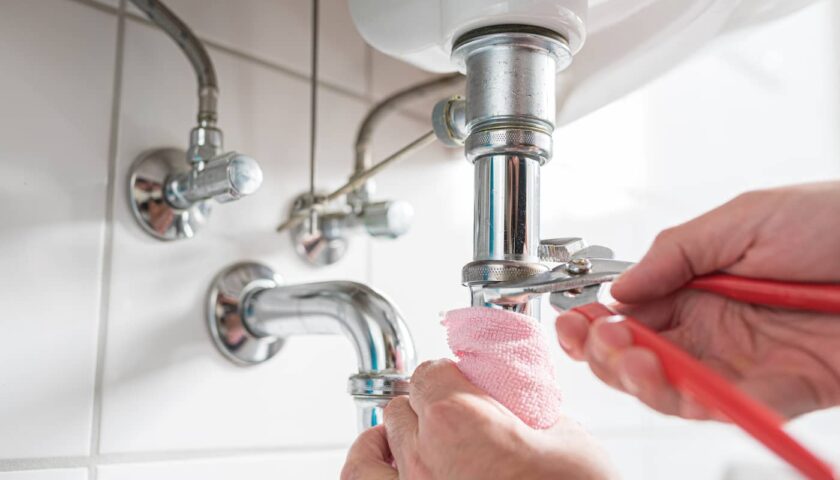A clogged bathtub drain full of tangled hair is one of our homes’ most common plumbing issues. As unpleasant and inconvenient as it may be, a clogged drain doesn’t have to remain that way for long. With the proper techniques and tools, you can unclog that hair-filled drain and get your tub draining freely again.
In this comprehensive guide, I’ll walk you through the steps and methods for tackling a clogged bathtub drain packed with hair. We’ll cover how to do both temporary quick fixes and permanent solutions that prevent future clogs from occurring. By the end, you’ll have the confidence to handle this pesky plumbing problem independently.
Why Bathtub Drains Get Clogged with Hair
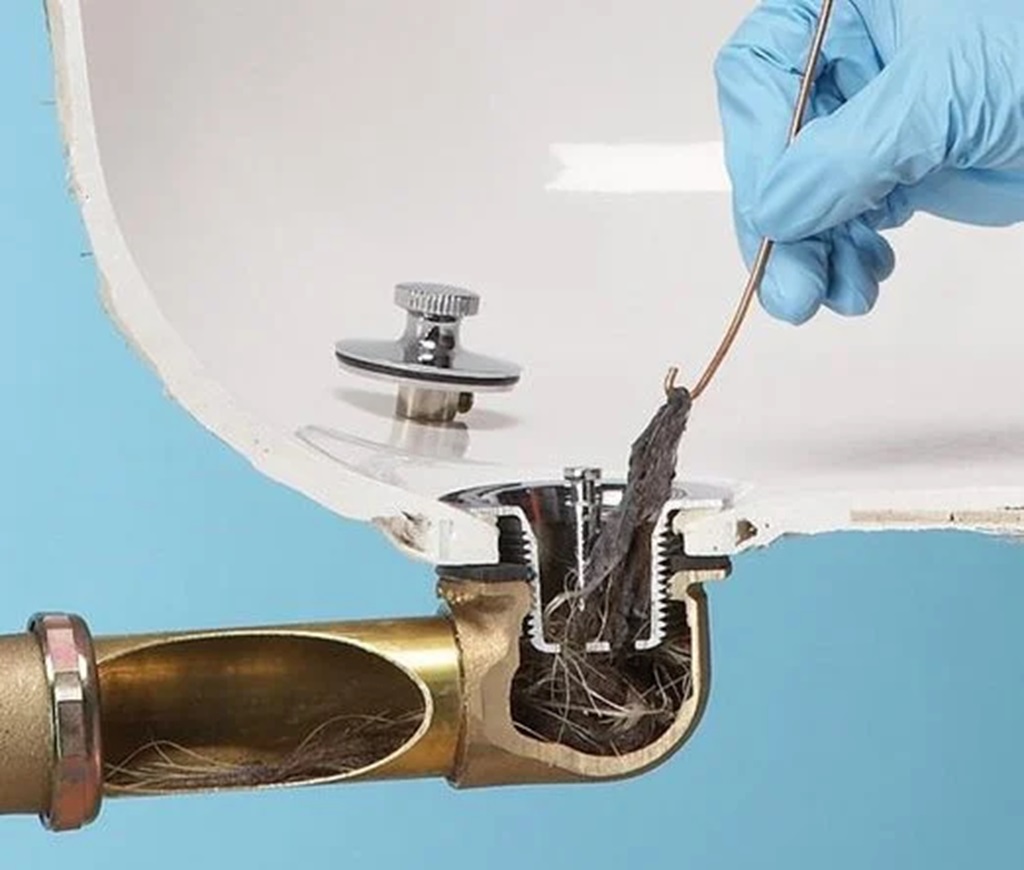
Before we dive into the how-to, let’s look quickly at why bathtub drains seem prone to hair clogs.
The problem lies in the shape of most bathtub drains. They have small drain openings and pipes that turn and curve down to connect to the main plumbing stack. Hair sheds naturally off our bodies, and when we shower or bathe, this hair gets washed down the drain.
Unlike toilet drains with powerful flushes, bathtub drains rely solely on flowing water to move hair and debris down the pipes. Without sufficient flow, loose hairs get caught in the tight turns of the drain and start to collect and pile up.
Over time, more hair gets trapped in this web until it forms a tight clog that blocks water from draining correctly. Grease, soap scum, and other gunk often stick to this hairball, making the clog even worse.
So, while hair clogs may be a nuisance, they’re inevitable, given the standard bathtub drain design. Let’s look at how we can clear and prevent them.
Step 1: Try a Quick Fix with a Zip-It Drain Tool
When you first notice the tub drain running slowly or not draining, start simply using a zip-it type drain cleaner. This inexpensive plastic tool zips through hair clogs to pull them out in just a few minutes.
Here’s how to use it:
- Get a zip-it tool. You can find these at any hardware store for a couple of dollars. They look like long, flexible sticks with small hooks along them.
- Please insert it into the drain opening. You may need to wiggle it around to fully get it into the drain opening.
- Once inserted, twist the zip-it stick clockwise as you push it further into the drain. This motion will help hook onto hair inside the drain.
- After pushing it down as far as you can, quickly zip it back up by turning counterclockwise. Go slow here to let the hooks grab all the hair possible.
- Pull out the zip-it stick and see how much hair it extracted—repeat the process to pull out more hair.
The zip-it often removes enough hair on the first try to unclog the drain thoroughly. Run some hot water to test. If the water drains, usually, the clog should be cleared!
This quick fix with a zip-it tool works well for minor hair clogs. But if the drain remains backed up, it’s time to move on to more intensive methods.
Step 2: Try a Baking Soda and Vinegar Drain Treatment
Try using a DIY drain cleaner made from baking soda and vinegar with a zip-it stick for deeper hair clogs that don’t budge. These everyday household products create a fizzy chemical reaction that helps break up gunk in drains.
Here are the steps:
- Start by pouring 1 cup of baking soda down the drain. Coat the drain walls and any visible hair with the baking soda.
- Next, add 1 cup of distilled white vinegar. The mix will immediately start to fizz and bubble.
- Place the stopper in the drain or cover the opening with your hand. This contains the fizzy reaction in the drain rather than letting it bubble out.
- Allow the baking soda and vinegar drain cleaner to sit for 30 minutes to work on the clog fully.
- After 30 minutes, run boiling water down the drain for 1-2 minutes to rinse away the cleaner.
If the vinegar/baking soda treatment fully unclogged the hair, the water should drain rapidly with no issues now. Discover how to remove bathtub drain. You’ll likely need to use a professional-grade drain opener chemical or mechanical removal for severe hair clogs next.
Step 3: Use a Liquid Drain Opener Chemical
When DIY options fail to open a hair-clogged bathtub drain, it’s time to use a liquid drain cleaner chemical. These powerful drain opening products use harsh lye or sulfuric acid to break down and dissolve gunk.
Here are some tips for success when using liquid drain openers:
- Choose enzyme or microbial cleaners when possible. These break down hair and organic buildup without harsh acids or lye. Roto-Rooter and Miracle are good enzyme drain opener brands.
- Always wear gloves and safety glasses when handling drain chemicals. Avoid contact with skin and eyes.
- Only use drain cleaners in bathtub drains, not kitchen sinks, which can contain food debris. Chemicals may react with food waste.
- Follow the product instructions carefully. Never mix chemicals.
- Remove drain stoppers before applying cleaners so they can fully reach the clog.
- Give the drain cleaner enough time to work fully, usually 15 minutes to an hour.
- After the indicated wait time, run boiling water for a few minutes to rinse away chemical residue.
Liquid drain openers contain potent agents that can dissolve tough clogs. Just be sure to read labels and take proper precautions when using them.
If liquid cleaners still don’t fully unclog the drain, mechanical removal is the most reliable option.
Step 4: Remove the Clog Mechanically
For the most stubborn hair clogs that resist chemical cleaners, mechanical removal by removing the drain pipes is the best solution. This allows you to yank out and fully clear out the trapped mass of hair.
There are a couple of ways to go about mechanical drain cleaning:
Use a Small Plumber’s Snake
A small plumber’s snake (a drain auger) can hook and rip through clogs when inserted down the tub drain. Follow these steps when using a plumber’s snake:
- Fully extend the plumber’s snake before inserting it. Turn the handle counterclockwise.
- Twist the snake into the drain opening and push it towards the clog.
- Crank the handle clockwise while applying light downward pressure to advance the snake through the hair mass.
- Once the snake reaches the clog, twist and turn it to hook into the debris. Retrieving it back and forth tears the clog apart.
- Remove the snake once the water starts draining again. Rinse with hot water.
Repeat as needed if it takes multiple passes to open the drain entirely. A plumber’s snake is an effective tool for removing tough hair clogs mechanically.
Disassemble the Pipes Beneath the Tub
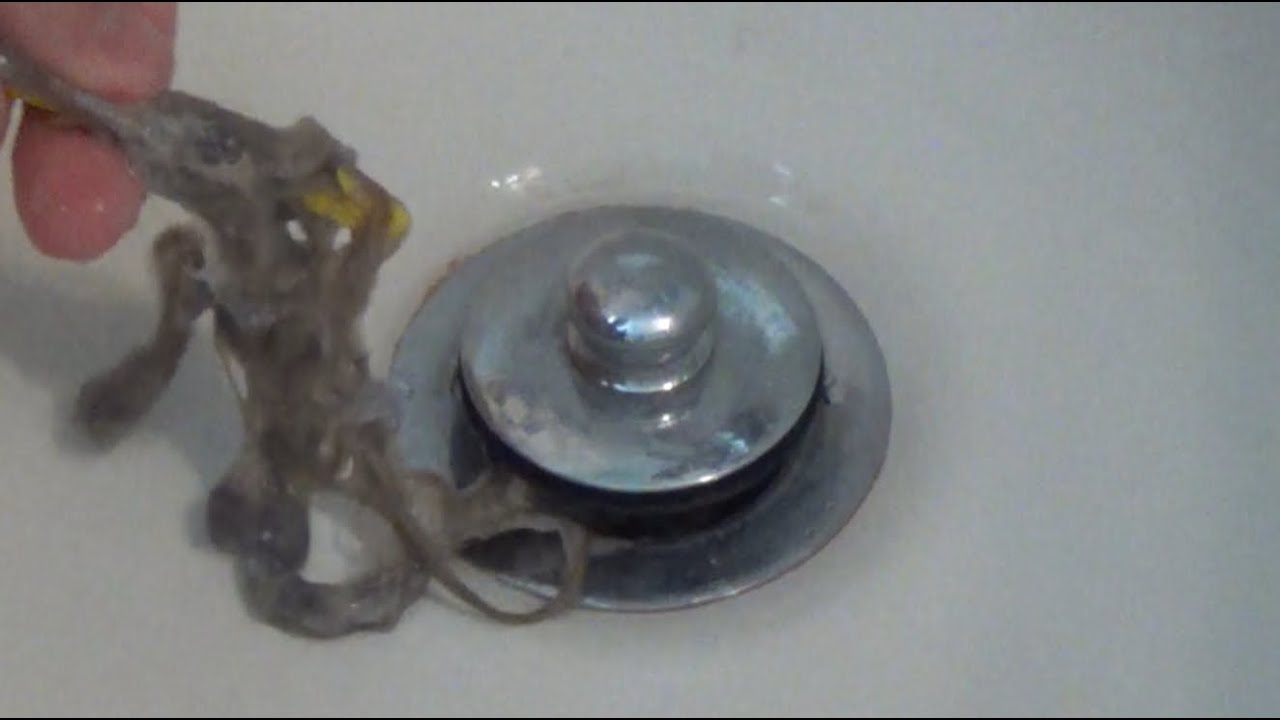
If you can’t clear out the hair with a snake alone, the next step is removing the drain pipes under the tub. This exposes the clog fully so you can manually pull out all the hair.
Follow these steps:
- Start using a bucket to catch water that may drain out when unscrewing pipes.
- Loosen and unscrew the slip-nut connecting the curved P-trap pipe to the drain tailpiece using pliers or a wrench.
- Remove the P-trap section first to access and clean the hair trapped here.
- Next, unscrew the tub’s drain tailpiece to remove it and remove any collected hair.
- Check the sink strainer/stopper unit and remove all hair from here.
- Scrape any remaining hair off the pipe walls with a screwdriver or zip-it tool.
- Reassemble the pipes using the plumber’s putty on the threads to seal connections.
Taking apart the drain pipes lets you clear out even severe hair clogs. Just be cautious of leaks when re-tightening pipe joints.
Now, with the clog entirely removed mechanically, let’s talk about preventing this issue in the future.
Prevent Future Hair Clogs
Unclogging hair-filled drains is a short-term fix. To prevent future clogs, you need to change some habits and add drain-protecting accessories. Here are some tips:
- Use a drain catcher or hair stopper over the drain when bathing to collect shedding hairs before they go down. Clean the catcher regularly.
- Avoid dumping loose hair directly down the drain after brushing or cutting. Throw it in the trash instead.
- Install a hair catch or drain strainer that collects hair before it goes down the drain. Clean this filter regularly.
- Consider getting a drain cover or screen to trap hairs. Some covers twist in place to make hair removal easy.
- Use drain maintainer chemicals like Roto-Rooter or Drano as preventative maintenance. Pouring a bit down monthly can help keep drains clear of buildup.
- Reduce hair shedding in the shower by brushing or combing before bathing to remove loose hairs.
- Take quicker showers to minimize wetting and wash hair down the drain.
- Avoid excessive hair products like conditioners and oils that can stick in drains.
- Periodically use a plumber’s snake or zip-it tool to clear drains before major clogs form.
- Keep drains well-sealed so hair or debris doesn’t sneak into drain openings. Replace worn slip nuts or gaskets if needed.
- Consider contacting a plumber to install a hair guard fitting that prevents hair from entering your pipes.
- Upgrade to a drain with a wider diameter pipe and smoother curves if replacing your tub. Newer drains are less clogged-prone.
- Dispose of any cleaning product containers properly to prevent hazardous chemicals from accidentally getting flushed.
Following these tips will go a long way towards preventing headaches from clogged, hair-filled drains! An ounce of prevention is worth a pound of clog-clearing.
Frequently Asked Questions
What is the fastest way to unclog a tub drain full of hair?
The quickest method is using a zip-it type plastic drain cleaning tool. Inserting and twisting this into the drain pulls hair out in just a few minutes.
What homemade drain cleaner works best for hair clogs?
A homemade mix of baking soda and vinegar breaks up minor hair clogs well. Make sure to plug the drain to contain the fizzy reaction.
Will liquid drain cleaners unclog a tub full of hair?
Yes, chemical drain openers designed for hair can help dissolve and remove clogs. Look for enzyme or microbial cleaners rather than acidic ones.
Should I disassemble pipes to remove hair clogs?
Taking apart pipes beneath the tub should be the last resort with severe clogs. But it allows full access to removing all the hair manually when needed.
How can I prevent bathtub drains from clogging with hair?
Using drain catchers and strainers prevents shedding hair from entering pipes. Avoid dumping hair directly down drains. Maintain drains periodically, too.
Conclusion
As you’ve learned, hair-clogged bathtub drains are common but can be cleared with the proper techniques. When undertaking the installation of a bathtub drain and trap, begin by implementing quick fixes such as drain zip tools or baking soda mixtures. In cases of persistent clogs, consider using liquid drain cleaners or, if necessary, disassemble pipes to mechanically remove the hair mass for a smooth and effective installation process.
To prevent future clogs, install hair catchers and filters to keep shedding strands out of drains in the first place. Maintain pipes preventatively, too. Follow these tips to keep your bathtub draining freely and hair-free for years.

